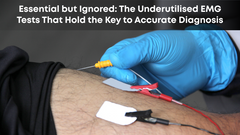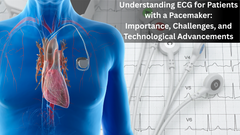Telemedicine: The future of healthcare
The COVID-19 pandemic transformed the way the world envisioned healthcare. Traditionally, patients visit doctors at hospitals or clinics in person to get a diagnosis. Some doctors also made “house calls” to visit their patients when they were unwell. This traditional approach to medicine has stood its ground since time immemorial and was the mainstay of medical systems worldwide. The in-person system is so popular and preferred in healthcare settings that patients and healthcare providers often frown upon technological advancements such as telehealth and telemedicine. In fact, telehealth accounted for a mere 5-15% of the total consultations before the pandemic hit, making it the least preferred method of consultation, lagging behind phone calls by 10%.
However, the COVID-19 pandemic disrupted the way the world viewed healthcare. As people and doctors became increasingly vary to contracting infections, the “demand and supply” gap between healthcare workers and patients widened like never before. Technology quickly jumped in to fill this gap, with telemedicine consultations accounting for a staggering 80% of all consultations between 2020 and 2022, making it the most preferred way of seeking healthcare services. A McKinsey report found that telehealth utilization for patient visits was nearly 38 times higher than in pre-COVID times, making the pandemic the driving force behind this surge.
What is Telemedicine?
Telemedicine is the remote delivery of healthcare and health-related information services through electronic methods such as video calls, email, chat, or other electronic means. Telemedicine is commonly categorized into two distinct services:
>Interactive Medicine
This service allows patients and healthcare professionals to communicate in real-time. For example, doctors and patients can communicate on a video call using apps such as eSanjeevaniOPD or others.
>Remote Patient Monitoring and Management
Caregivers and healthcare professionals can check patient vitals such as including SpO2, ECG/EKG, Respiratory rate, NiBP, IBP (used during surgery), EtCO2 (capnography), temperature, CO (cardiac output), NMB (Neuro-muscular blockade), BIS (Bi Spectral index), and other vital parameters remotely.
The impact of telemedicine
Until the COVID-19 pandemic hit, the impact of telemedicine could only be felt in remote regions or amongst healthcare providers as they used this service to interact with other professionals to provide better point-of-care services. Today, telemedicine helps doctors provide consultations and diagnostic services to patients and other healthcare professionals worldwide.
The impact of telemedicine on healthcare providers
Doctors, nursing staff and other healthcare professionals benefit significantly from telehealth services. Not only can they avoid unnecessary exposure to infections for themselves and their patients, but they can also help patients across geographies, making it easy for them to broaden their reach. Additionally, doctors can now interact with other specialists in real time, helping patients access world-class healthcare from the comfort of their homes. For example, doctors in a healthcare setting can easily monitor their patients remotely and interact with ICU staff using remote-view-ready patient monitors from manufacturers such as Clarity Medical.
The impact of telemedicine on patients
Patients in remote regions always had problems accessing healthcare facilities. Doctors and hospitals were often too far to reach in time, or there were no specialists around to provide accurate diagnostics. Patients also found themselves in a bind when they could not go in for a second opinion at any time. Telemedicine helps patients access world-class healthcare from their homes, and they can now quickly get a second opinion to see if they got an accurate diagnosis the first time around.
Telemedicine—transforming healthcare in India
Telemedicine has had a significant impact on healthcare facilities in India. Aided by a strong continued uptake in the adoption of telemedicine by both patients and local administration and healthcare workers, quality healthcare from established professionals and hospitals is now available at your fingertips. Mobile solutions such as eSanjeevaniOPD and others are helping individuals in remote regions access healthcare services from specialists—something that was impossible less than three years ago. Telemedicine has also helped reduce the number of incidents of hospital-acquired infections by up to 80%, making it the safest mode of providing patient care.
Telemedicine centres in India
Both public hospitals and private clinics in India offer telemedicine services to their patients. The telemedicine division of the Ministry of Health and Family Welfare tied up with CDAC (the Center for the Development of Advanced Computing) to launch the eSanjeevaniOPD portal. This unique, national teleconsultation service helps millions of people access quality healthcare from prestigious public hospitals in India. The national telemedicine service was an instant hit in India and has served over 100 million patients. With over 200,000 providers, 15,000 hubs and 115,000 operational spokes, this is possibly the world’s most comprehensive implementation of a public telemedicine system.
Additionally, solutions such as ResApp, CloudPhysician, DocOnline, DocPulse, eNextICU, HealthKon, Ziffyhealth and many others provide telemedicine platforms to clinics and hospitals in India so they can help their patients consistently access quality healthcare.
Telemedicine hardware and Clarity Medical
Telemedicine is not limited to just software platforms. Hospitals, clinics, and patients needing 24x7 care at home use telemedicine to help doctors and ICU staff manage patients remotely using patient monitors. Telehealth products from companies such as Clarity Medical help doctors, caregivers, and staff reduce incidents of hospital-acquired infections while ensuring that both patients and caregivers can provide the best possible care to patients. Clarity Medical’s patient monitors offer real-time remote views using mobile apps and offer 2-way communication to ensure world-class patient care.
Final Thoughts
Telemedicine arrived in its current form many years ago. However, it took a global pandemic to boost its adoption rates and the numbers continue to rise today as individuals and caregivers understand the importance of technology in healthcare. With companies such as Clarity Medical at the forefront of telemedicine research, healthcare providers find it easy to access highly accurate patient data while ensuring the same levels of reliability and accessibility as that of a physical device at their disposal.












